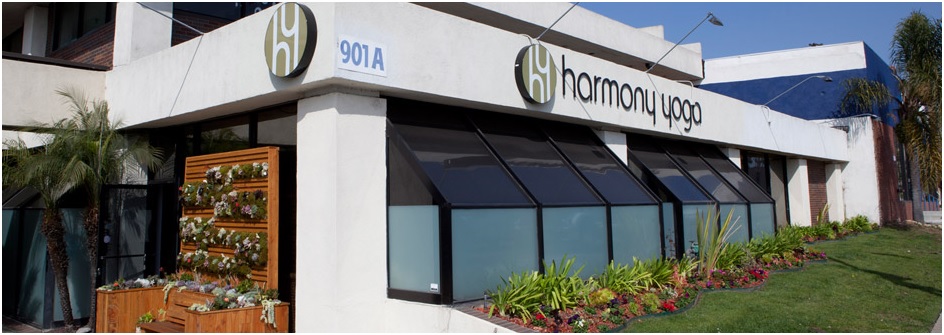
He who lives in harmony with himself lives in harmony with the universe.
Marcus Aurelius
I vividly remember that day three years ago when I first spoke to Najla Barile (then Coury) on the phone inquiring about the Harmony Yoga Teacher Training Program. I had never met Najla in person, and honestly knew very little about Harmony Yoga. For years I had been poking around for a formal yoga teacher training program, but never found one that felt right to me. Not long into the conversation, I realized that Najla was saying all the things that I had been waiting to hear. I was inspired by what she said, the way she said it, and the fact that she was honestly listening to me. Even without having formally met Najla, I knew that this was the program I had been looking for. My husband, more pragmatic than me, suggested I actually take a class from Najla, and that sealed the deal.
Now, three years later, I visit Harmony Yoga almost every day either in my capacity as a yoga teacher or as a practitioner. I love the simple and calming décor, while the beautiful practice room is sacred space to me. Sometimes I walk into the studio and feel, for the first time all day, like I can finally take a deep breath. I feel supported and loved by my coworkers, friends and students. I have no inclination to either teach yoga or practice yoga anywhere else. I am fulfilled. As a result, I sometimes forget that Harmony Yoga and Najla have a long and rich history that long predates me.
Chappell (Chappy) Foote opened the doors to Harmony Yoga in 1999. At that time, yoga was just becoming popular in places like Los Angeles and New York. This was before the mega corporate yoga chains took hold. Chappy, an accomplished yogi and traditionally trained yoga instructor, can trace his teaching lineage all the way back to Tirumalai Krishnamacharya (1888-1989), who is widely considered the “Father of Modern Yoga.” Krishnamacharya developed Vinyasa Yoga, a system of yoga synchronizing breath and movement. Vinyasa Yoga is still one of the most popular styles of yoga, and it is taught in a variety of different ways all around the world.
Krishnamacharya trained many influential yogis including B.K.S. Iyengar and Pattabhi Jois. Pattabhi Jois in renowned for taking Krishnamancharya’s essential yoga teachings and developing them into a unique style of yoga called Ashtanga. In Ashtanga, a prescribed series of yoga poses are executed in swift succession, combined with deep, controlled breathing. Maty Ezraty and Chuck Miller, the founders of Yoga Works, studied Ashtanga in Mysore India with Pattabhi Jois. Under Maty and Chuck’s tutelage, Chappy Foote learned yoga in the Ashtanga tradition, but was also indirectly influenced by Krishnamacharya. It is through this path that the teaching tradition at Harmony Yoga can be traced back directly from the founder, Chappy Foote, through Maty and Chuck to Pattabhi Jois, and then back to Krishnamacharya.
Najla Barile purchased Harmony Yoga in 2011. She learned yoga from Chappy Foote, and became another link in the chain connecting the Harmony Yoga teaching lineage back to Pattabhi Jois and Krishnamacharya. Najla then forged an offshoot of Vinyasa Yoga called Harmony Yoga, incorporating Harmony Vinyasa and Harmony Deep Flow. This outgrowth of Vinyasa Yoga matches breath with movement and then movement with music. In Harmony Vinyasa classes, postures are performed fluidly, whereas a little extra time is taken exploring each pose in Harmony Deep Flow classes.
Harmony Yoga, however, is so much more than that. It is a non-dogmatic, egalitarian, student based approach to teaching yoga. In all Harmony Yoga classes you can expect uniformly well rounded, creative, quality classes instructed in a nurturing, non-competitive, safe environment that welcomes absolutely everyone. In these classes you will be prudently urged to push your own personal threshold, thus becoming mentally, emotionally, and physically stronger. Breaking through perceived barriers in yoga can produce a profound ripple effect both on the yoga mat and in your personal life. With barriers removed, there is room to grow and change in ways previously unimaginable.

